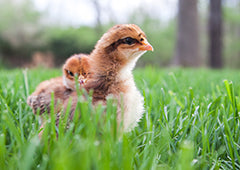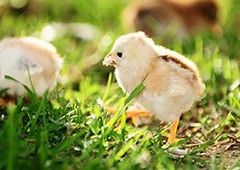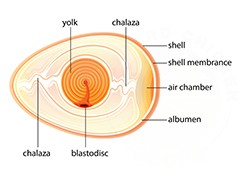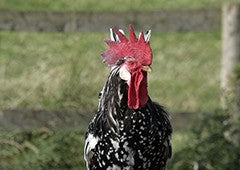A chicken brooder is a man-made Mummy to a baby chick. It keeps them toasty warm while they grow from little fluff balls to chickens with feathery finery and also protects your precious gems from predators if located outside in a barn and from family pets inside. Brooding is one of the most exciting experiences that you will have as a backyard chicken keeper.
Hatchlings and day old chicks require consistent warmth, light, protection, water and food. Simple needs, yes. And, setting up your brooder is also easy as long as your chicken brooder meets the following criteria in order to properly mother your precious chicks:
Space
Suitable space for the amount of chicks: In the beginning, the wee ones will primarily be napping and eating, so a smaller container or a larger one with a partition is perfect. As they grow they’ll need more space to move about, keep squabbles at bay and to deter odor buildup from increased droppings, so move them into a bigger container or remove the partition from the current brooder.
Heat
Have a light and heat source: Many folks use a simple heat lamp for this purpose, providing both light and heat inside the brooder, but it must be secured so as not to cause a fire. Since a heat lamp attaches with a metal clamp, it can be moved higher on a regular basis to decrease the temperature as the chicks grow their own little feathery blankets. These can also be attached with an automatic temperature gage and timers to ensure the temperature also stays consistent. There are also radiant heat panel brooders which are very safe, more efficient, and remarkably cool to touch. This brooder sends the heat below the panel, making that a nice cozy spot for chicks.
Security
Offer Security: These little fluff balls are quick, oh so quick! But, not so quickly caught. So, make sure that your brooder is secure. As they grow feathers, chicks also grow taller and bolder, like to practice flapping their beginner wings, and will begin to perch. Your invincible darlings will most likely begin taking flight and you will come in to discover that they’ve learned how to perch…on the tippy- topmost rim of their brooder where they teeter and totter, and sometimes totter out onto the floor. Now is the time to add a screen across the top or move them into a large dog crate as I did! You’ll definitely sleep better and won’t awaken to loud chirping in from the next room! Also, if you have young children, curious pets, or your brooder is located in an out building, remember to take extra safety precautions to keep your brood safe!
Ventilation
Have proper ventilation, moisture control, and NO drafts: Make sure there is adequate air flow through your brooder, but not enough to cause chilly chicks! Any sudden changes in temperature will kill them at this fragile age. Chicken brooders kept indoors are easily kept free from drafts, but for outdoor brooders, be sure to set them up away from windows and doors where drafty air may sneak in. Chicks aren’t naturally neat-niks! They will undoubtedly tramp across waterers and feeders, and spill, spill, spill! So ensure that your young ones stay dry and cozy in their brooder with proper bedding such as paper towels initially, which are perfect for this purpose as they are readily available, , easy to replace, and inexpensive. However, as your chicks grow, they will grow out of paper towel bedding and need a more absorbent material, such as fine wood shavings, straw or hemp. Change the bedding often, though!
Nutrients and Bedding
Have suitable flooring, feeders and waterers: Chicks are not well coordinated either and will need flooring in their brooder that offers a bit of friction. So, if you are using a plastic tub or container as your Mummy hen, then cover the floor abundantly with bedding. Mason Jar waterers or ceramic dishes that they can’t tip over are just right for baby chicks. The rims on these are shallow enough to prevent drowning. Plastic Flip Top feeders or Mason Jar feeders offer the right amount of feed and are easily refilled as appetites grow!
Now, you’re ready to set up your chicken brooder! Think carefully though, as raising chicks can be a dusty business. A spare bedroom works wonderfully for brooding, otherwise a bathroom, your garage, or an outbuilding like a garage, carport, or covered area around the side of your house will suffice. Most importantly though, set up your brooder well BEFORE your brood arrives. You need plenty of time to make sure it’s in excellent working order, warm enough, and stocked with water and chick starter feed.
The brooding process is quite simple really. When your little ones do arrive, gently lift them up, dip their tiny beaks into the waterer and set them down into the brooder! Initially, chicks need it hot! Beginning temperature should be set at 35 - 37 degrees Celsius, reducing this about 5 degrees each week until the brooder temperature is equal to room temperature. Be prepared to be captivated by these fuzzy wee ones! This is a good though, because you’ll want to observe them to keep a check on their comfort level. Chicks who are too hot will gravitate away from the heat source, while chilly chicks will huddle under the heat source, climbing over each other in an effort to warm themselves, and perhaps even smothering the others. If you see your chicks favoring one side of your brooder, they may be avoiding a draft. Ideally, your chicks will be here and there, drinking or eating, peeping or sleeping, exploring or at perch practice, and just basically thriving in their well set up brooder! Welcome to the wonderful world of chicks!
Top Chicken Brooders
Brinsea Ecoglow 20 Safety 600 Brooder
This product is the perfect temperature for around 20 chicks and is the same as the temperature of a hen! It can be used throughout their childhood until adulthood using the adjustable height.
Farm Innovators Model 3700 Baby Chick Starter Kit
This easy to set up kit holds up to 15 chicks. It doesn't come with a brooder lamp but has an adjustable hanger for one.
RentACoop 12" x 12" Heating Plate
This heating plate will warm up to 20 chicks and simulates the warm undercarriage of a mother hen to keep them warm and cosy.
We all know just how quickly these little ones grow up so you are going to want to make sure that you've got the knowledge you need to raise a happy, healthy flock. You wouldn't want to risk making tragic mistakes that could impact their development, growth or worse!
67% of chicken keepers surveyed experienced a chicken health or behaviour issue in the first 12 months that they didn’t know how to handle. This is why I highly recommend that you check out our friends at Chickenpedia. Their Raising Baby Chicks course provides lots of valuable information to help you avoid any life-threatening accident. You'll have all the confidence to give your feathered friends the best start in life.
Get access to all of the best chicken keeping courses at Chickenpedia.


















